Forcys has been involved in numerous discussions related to Critical National Undersea Infrastructure (CNUI), which result in the conclusion that maritime naval forces and security organisations are being expected to reorient to the new task and are looking for technology to provide quick-win solutions for delivery. But how is this additional activity funded and delivered? How could industry support the protection of their assets, from which they make substantial profit?
The stark reality is that industry will only engage with the process when the operating risk becomes intolerable and/or the profitability of its business is not affected. To compel industry to pay for CNUI protection is not as simple as imposing a levy. A comprehensive approach that aligns financial incentives, regulatory frameworks, and collaboration between the private sector, governments, and naval forces is essential.
This article by Justin Hains, Business Development Manager, discusses the ‘top down’ approaches that could strengthen the security of CNUI and concludes with an initial step towards collective responsibility for security, irrespective of the countries involved.
Highlighting Financial Risks and Losses
Companies must recognize the significant financial risks of infrastructure failure, including disruptions from sabotage, natural disasters, or cyber attacks. Such incidents can lead to substantial downtime, revenue loss, and reputational damage. Potentially, investment in protection could lower insurance premiums, presenting a clear financial incentive to safeguard undersea infrastructure.
Public-Private Partnerships (PPPs)
Governments could encourage joint funding mechanisms, where both public and private sectors share the cost of protection. This could include subsidies or incentives for companies that invest in undersea security. A shared responsibility model motivates both sectors to contribute, minimizing the burden on individual entities.
Economic and Operational Benefits
Protection should be seen as a long-term investment. Preventing service interruptions and costly repairs reduces future expenditures, while avoiding fines for non-compliance or environmental damage. Secure infrastructure enhances reliability, operational efficiency, and could provide a competitive edge for companies prioritizing resilience.
Raising Awareness of Vulnerabilities
Increasing awareness about the growing risks—ranging from cyber attacks to physical sabotage—could spur companies into action. Sharing case studies of past incidents where undersea infrastructure was damaged can help highlight the serious consequences of neglecting protection.
Legislation and Regulation
Governments could implement mandatory security measures for critical infrastructure, with penalties for non-compliance. Additionally, tax incentives or credits can encourage voluntary investment in protection. A regulatory framework could ensure that companies take the necessary steps to safeguard their assets, viewing it as both a legal and financial obligation.
International Cooperation and IMO Framework
Under international law, the United Nations Convention on the Law of the Sea (UNCLOS) grants nations exclusive rights over the seafloor within their Exclusive Economic Zones (EEZs), where much of the critical infrastructure lies. The International Maritime Organization (IMO) provides a framework for the safety and security of maritime infrastructure. Governments can urge industry to cooperate in protecting these assets, noting that disruptions to infrastructure within the EEZ could have both national and international repercussions. Multinational agreements and IMO initiatives can help distribute the costs of protection.
Centralized Reporting and Monitoring Hub
A centralized hub would allow for real-time reporting, monitoring, and coordination among stakeholders. This system would integrate data from various sources—such as satellite surveillance, sensors on infrastructure, and environmental monitoring—to detect potential threats, enabling rapid responses, and inform stakeholders in a timely, accurate and coherent manner. The UK Maritime Trade Operations located in Dubai provides an example of such a response to piracy, armed robbery and potentially mining events, where the shipping industry and naval forces benefit from common situational awareness. A central platform for CNUI would allow quick incident reporting, ensuring coordinated responses from industry, government, and naval forces.
Data Sharing: Asset Location and Environmental Information
Companies should share location data of critical assets and environmental information. This allows authorities to better protect and respond to threats, especially in high-risk zones. Sharing environmental data (e.g., seismic activity or water currents) aids in preventing natural risks that could impact infrastructure. Additionally, sharing cyber security-related data helps protect against digital threats.
Legal and Regulatory Framework for Data Sharing
To encourage data sharing, clear legal frameworks must protect proprietary information while ensuring the sharing of necessary security and environmental data. Governments could offer liability protections for companies that share information in good faith, and establish data-sharing standards for consistency and security.
Conclusion
Key to the success of CNUI protection is the creation of a centralized reporting and monitoring hub, coupled with secure data sharing between industry, government, and naval forces. This could be the first step towards a holistic approach to protection of undersea infrastructure. Underpinned by international frameworks like UNCLOS and conforming to IMO guidelines, this approach offers stronger risk management, quicker response times, and greater resilience, ultimately encouraging industry to invest in the protection of critical infrastructure.
Forcys is pleased to announce the promotion of Dan Zatezalo to the role of Vice President, reinforcing the company’s commitment to delivering cutting-edge naval and subsea solutions to the US military and its allies.
Backed by over fifty years of experience, Forcys offers the global maritime naval sector remote, autonomous, and networked control capabilities delivering integrated situational awareness to customers in the underwater domain.
Covering a range of maritime operations including asset protection, littoral strike, mine warfare, submarine rescue, and submarine and anti-submarine warfare, Forcys seeks to transform the underwater domain by enabling increasingly distributed and automated operations. This is made possible by integrating and bringing to market world-changing solutions from leading technology partners Chelsea Technologies, EIVA, Sonardyne, Voyis, and Wavefront Systems.
With extensive experience in the sector, Dan has served as General Manager for North America and Head of Global Sales becoming instrumental in supporting US operations and global growth. Dan’s leadership will continue to support Forcys’ mission to equip navies with customer-shaped solutions that enhance battlespace advantage both above and below the surface. Attendees at Sea Air Space 2025 are invited to visit the Forcys stand to meet Dan and learn more about Forcys latest innovations in maritime navel forces.
At Forcys, we understand that modern maritime security demands more than just sophisticated sensors or autonomous vehicles – it requires seamless integration of cutting-edge technology. This is where the combined expertise of our technology partners comes into play. The capabilities of EIVA’s ViperFish, alongside advanced solutions from Sonardyne, and Wavefront Systems are reshaping how subsea threats are monitored and managed, ensuring that the maritime defence community has the tools needed for effective real-time operations.
ViperFish is an all-in-one remotely operated towed vehicle (ROTV) designed for high-resolution data collection in autonomous operations. At Forcys we see the integration of this product as a significant step forward in autonomous operations. Designed for seabed imaging and geophysical surveys, ViperFish performs these tasks with remarkable precision, particularly and can even be paired with unmanned surface vessels (USVs). This opens up new possibilities for autonomous operations in complex underwater environments, enhancing mission safety, efficiency and data accuracy.
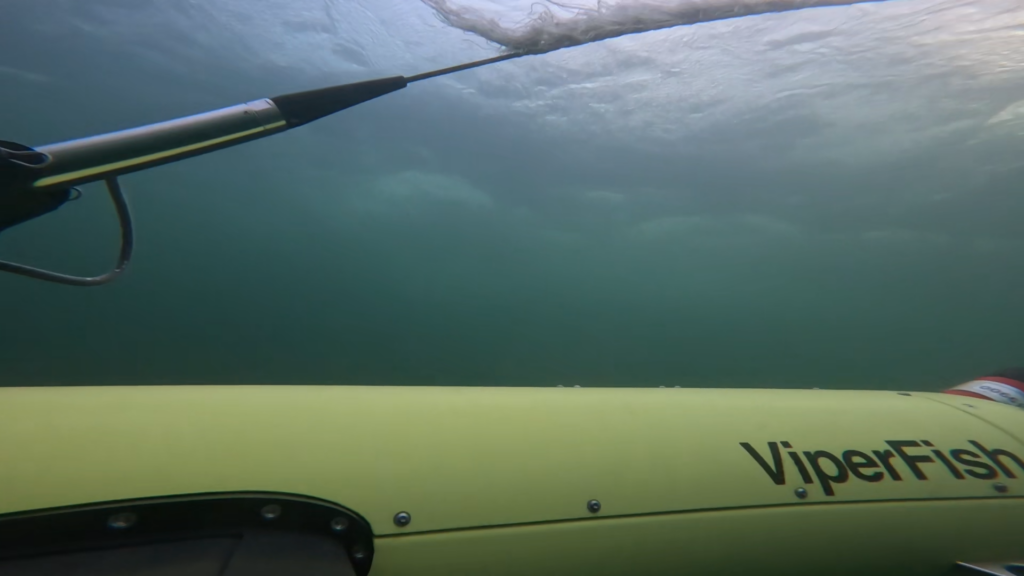
By combining this ROTV with positioning systems, sonar technology and EIVA’s NaviSuite survey software, we deliver a powerful, integrated solution that supports critical defence missions. ViperFish’s ability to automatically maintain a set height above the seabed makes it an invaluable tool for mine countermeasures, UXO (unexploded ordnance) surveys, and rapid environmental assessments.
“Forcys leverages Covelya Group partnerships to deliver solutions that provide capabilities beyond the sum of their individual components,” says Antonio Belfiore, Senior Sales Manager at Forcys. “Additionally, the combined research and development expertise across our group of companies enables Forcys to rapidly adapt to emerging threats and evolving mission requirements. This knowhow was instrumental in the development of ViperFish. Designed to be the tool of choice for mine-hunting across the littoral and in riverine environments, Viperfish is also easy to use and provides your team actionable data in real-time.”
In the context of mine warfare, these integrated solutions are revolutionising the way threat detection is carried out. By relying on autonomous vehicles that can navigate complex underwater environments with precision, defence teams can carry out missions more efficiently and frequently than ever before. The combination of ViperFish’s flexibility and the advanced sensor technologies it brings together enables vast subsea areas to be covered with unprecedented detail.
These advancements not only improve operational efficiency but also provide the necessary foundation for many future maritime and defence security operations.
At Forcys we’re proud to be part of this journey, ensuring that autonomous technology plays a central role in securing your assets.
Read more about our technology partner EIVA.
Discover ViperFish ROTV deployed by ProZero 8m Naval Intelligence USV:
At Forcys, we are committed to delivering innovative underwater technology solutions that are both reliable and cost-effective. A key part of our approach is leveraging Commercial Off-The-Shelf (COTS) software and hardware to meet the complex demands of maritime communications.
COTS solutions provide pre-built, readily available technology designed for seamless integration into existing systems. Unlike bespoke solutions that require extensive customisation and long development cycles, COTS offers a faster, more efficient, and cost-effective alternative for customers looking to enhance their capabilities.
We recently spoke with our Technical Sales Manager, Benn Pickering, who brings extensive experience in sales, business development, and customer relations. He shared his insights into the advantages of COTS technology and its growing impact on underwater operations.
Benn explains, “Rather than invest time and resources into something bespoke, you can take advantage of existing, well-tested solutions. In fact, COTS technology is also known for its reliability, having been built on years of industry-wide testing and refinement. These solutions are designed to withstand the harsh conditions of underwater environments. This is crucial for maritime operations, where equipment must perform flawlessly for extended periods. With COTS, you benefit from tried-and-tested technology that has already been proven in real-world conditions.”
Another key advantage is that with continuous updates and advancements in the commercial sector, COTS solutions evolve to keep pace with emerging technologies, ensuring they remain relevant for years to come. Standardised hardware and software also make repairs and replacements simpler and faster, while user familiarity with these systems reduces training time and support requirements.
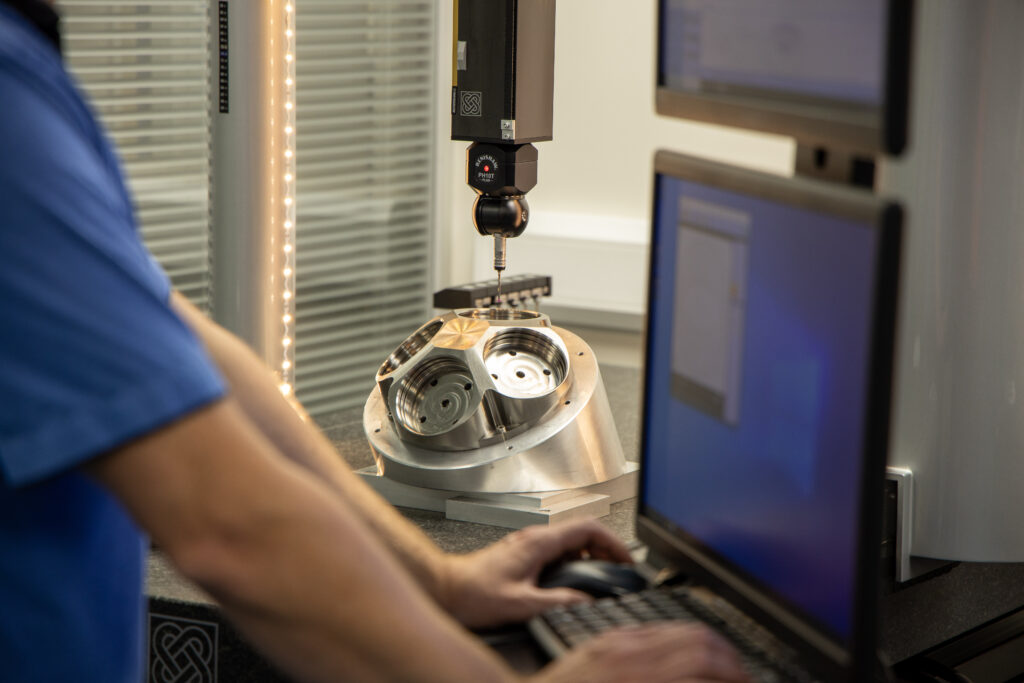
“The ability to integrate new advancements without overhauling entire systems is a major advantage,” Benn points out. “It gives you the confidence that your investment will remain valuable as technology progresses.”
“At Forcys, we go beyond simply offering COTS products. Our technology partners are creating an ecosystem of compatible technologies that work seamlessly together, providing end-to-end solutions without compatibility issues,” Benn shares.
By staying ahead of industry developments, Forcys empowers clients to tackle maritime challenges with confidence and efficiency.
A great example of COTS technology in action is our technology partner Sonardyne’s SPRINT-Nav, an all-in-one subsea navigation instrument that integrates an inertial navigation system (INS), a Doppler velocity log (DVL), and a depth sensor into a single, compact unit.

“SPRINT-Nav is a great example of how COTS can offer high-performance solutions without the costs and complexity of a custom-built system. It is designed to provide robust, long-endurance navigation, making it ideal for AUV and ROV operations. It has already been used extensively in support of offshore underwater operations and has become the navigation system of choice for most large autonomous underwater vehicle manufacturers. A bespoke navigation system takes years to develop, manufacture, and test. At the end of that process, you could still fall short of your goals. With systems like SPRINT-Nav, you can pre-determine the outcome from the data sheet.”
“However, if you are required to meet military standards, leveraging COTS solutions is an excellent strategy. It allows you to begin with a proven, functional product and focus your efforts on ruggedisation. We’d be happy to partner with you to achieve full Military-Off-The-Shelf (MOTS) compliance.”
If you’d like to find out more, please reach out to our team.
Held at Gaylord National Resort & Convention Center from April 6th to 9th, Sea-Air-Space is the premier maritime exposition in the U.S., bringing together defense industry leaders and top military decision-makers from around the world to share the latest advancements in the maritime domain. Forcys will be exhibiting at the Prince George’s Exhibition Hall on booth 350.
Forcys will be exhibiting at NAVDEX in ADNEC Marina, Abu Dhabi, UAE on stand C-043 from the 17th to the 21st of February 2025. Held under the patronage of His Highness Sheikh Mohamed bin Zayed Al Nahyan, President of the United Arab Emirate, NAVDEX is held alongside IDEX, the International Defence Exhibition and Conference .
Ranges are a critical to support ongoing underwater operations. They provide a controlled environment to calibrate and validate sensors, determine acoustic source levels for submarines and ships, and provide safety and ground-truth data for undersea warfare exercises and torpedo firings. They are commonly used to support submarines, anti-submarine warfare tools and mine warfare. Underwater ranges are complex systems requiring specialist tools to help deploy, recover and accurately track the equipment and kit while submerged.
Essential tools for underwater range operations
This is where the right equipment can determine the difference between success and failure. If you are operating a range here is a handy list of tools:
- Acoustic pingers: Acoustic pingers are used to track underwater targets. Our technology partner Sonardyne offers commercial-off-the-shelf (COTS) acoustic pingers that can be easily deployed to track a range of targets using other COTS systems. Alternatively, for specialist requirements our technology partner Chelsea Technologies can design, develop and manufacture bespoke pingers to meet customer’s specific needs.
- Ultra-short baseline: An underwater acoustic positioning system used to determine the precise location of submerged objects. It consists of an array of transducers (sound emitters and receivers) deployed from the surface, and is used to track a transponder (a device that emits an acoustic signal when triggered) attached to the object being tracked. Sonardyne offer the world-leading Ranger 2 family of USBL systems enabling different solutions that can be tailored for your use.
- Acoustic releases: These systems are equipped with mechanical release mechanisms triggered by an acoustic signal. They offer many practical uses for range operations, the most common use is to deploy objects to the seabed or buoys to the surface enabling the operator to deploy and recover sensors remotely and securely. Sonardyne releases are sold with deck units to operate them but they are also part of the same acoustic family as the Ranger 2 USBL meaning that the USBL can also be used to track and operate them.
- Echo repeaters and acoustic sources: These systems are used to test and calibrate low and high-frequency sonars used in the range. They can be used to transmit custom signals, and to reply to a calibrated source level and mirror the received signal introducing Doppler effects and reflections. Chelsea Technology’s ERAS is a compact solution easily deployable from vessels of opportunity with minimal logistics operating over a wide frequency range.
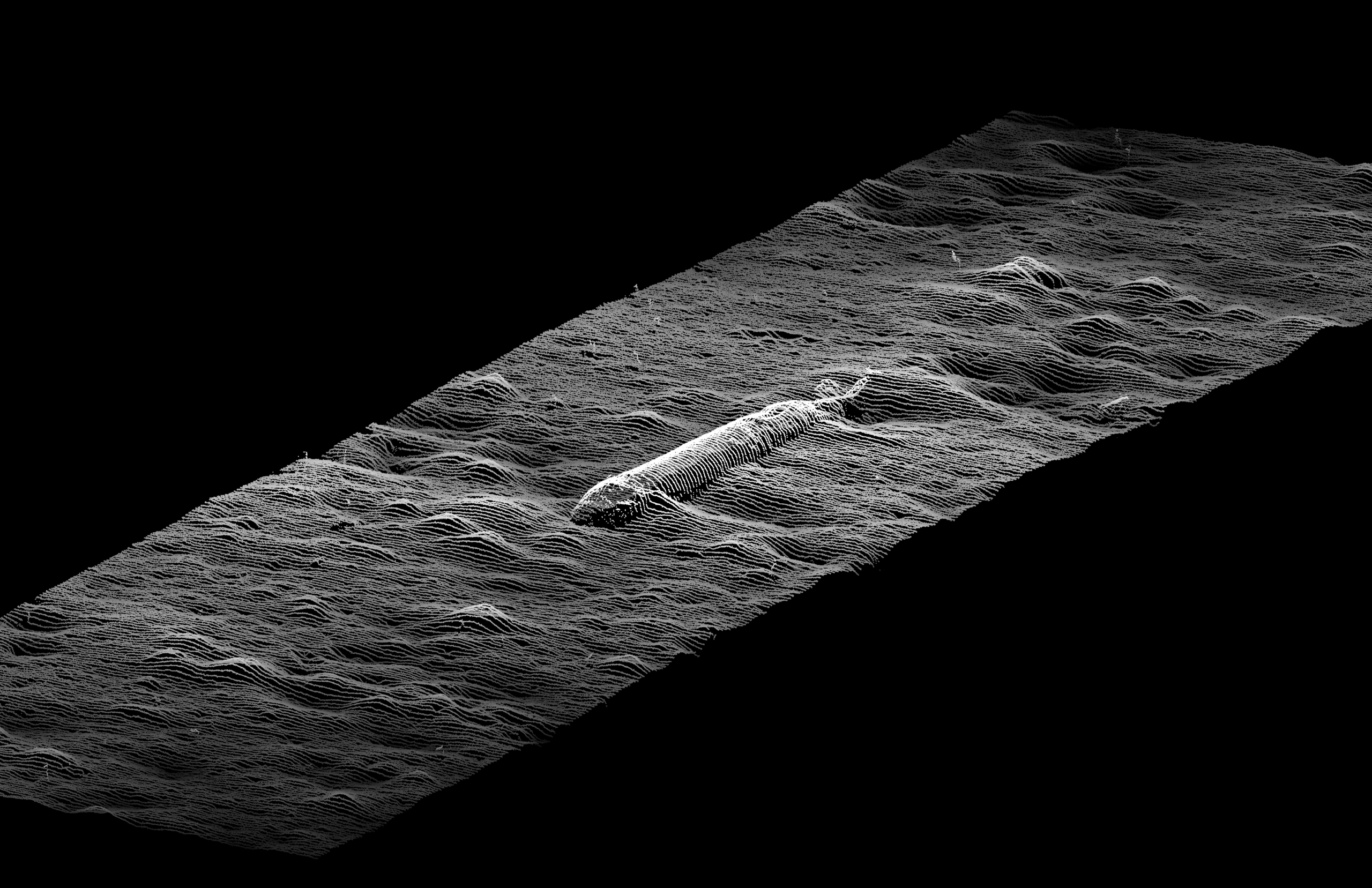
Train like you fight
Most naval ranges require significant infrastructure and maintenance, and they are busy supporting existing naval capabilities. With a new generation of uncrewed systems being developed in large numbers, additional capacity and scalable solutions are needed.
To develop a solution to this bow wave of need for additional underwater acoustic and tracking range capability and capacity, Forcys has been working in conjunction with Sonardyne to supply the Position Vector Transponder (PVT). These PVTs form the heart of a deployable system and can be delivered — on a lean budget — anywhere at any depth. They deliver high positional accuracy and can track across a larger volume of water than a USBL solution. They can be scaled down or up to meet specific concepts of operation requirements. This system has already been demonstrated in partnership with QinetiQ at MoD BUTEC and REPMUS.
Using the same building blocks as the permanently deployed solution at Smart Sound Plymouth, our solutions are proven and deliver results needed to get our warfighters ready.
If you would like to find out more please don’t hesitate to get in touch.
Forcys, a global leader in underwater defence technology, and DRASS, a renowned name in the manufacturing of diving systems and underwater vehicles, have signed a Memorandum of Understanding (MoU) aimed at revolutionising underwater operations.
Forcys integrates and brings to the defence market world-changing solutions from leading technology partners Chelsea Technologies, EIVA, Sonardyne, Voyis, and Wavefront Systems. These companies are renowned for their innovative offerings in underwater and maritime operations, making them ideal partners for DRASS.
Luca Biasci, SDV & LUUV Program Manager at DRASS, emphasizes the significance of this collaboration: “DRASS has consistently been at the forefront of technological innovation in the underwater domain. With this partnership, Forcys’ robust portfolio of advanced payload technologies will be integrated with our Large Unmanned Underwater Vehicles (LUUVs), RONDA, expanding our suite of solutions to meet the evolving demands of the underwater sector.”
Under this agreement, Forcys’ advanced underwater vehicle systems and sensor payloads will complement DRASS’ capability to meet the evolving needs of navies.
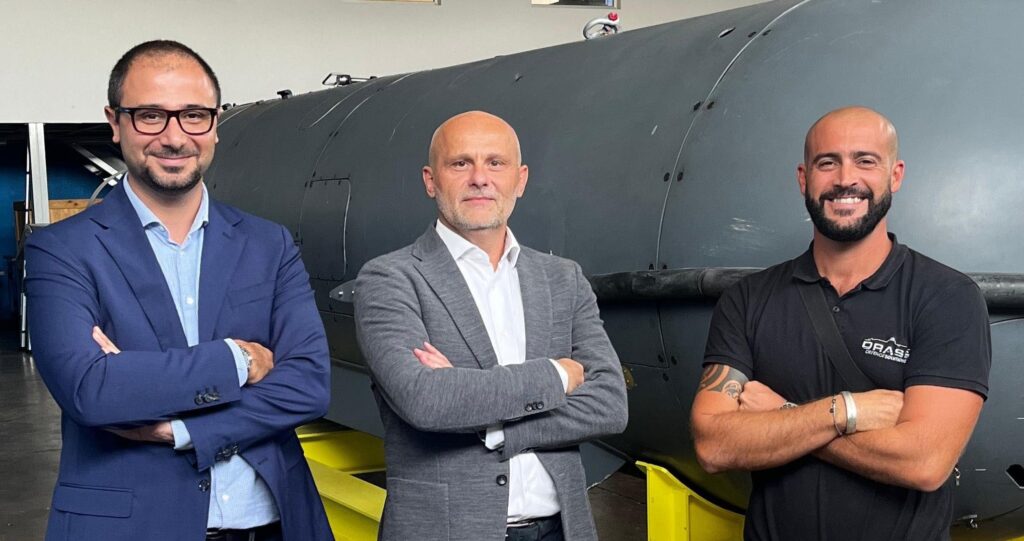
Antonio J. Belfiore, who leads sales in the Europe, Middle East, India, and Africa (EMEIA) region for Forcys, recently visited DRASS headquarters in Livorno, where the final details of the agreement were ironed out.
“We are thrilled to partner with DRASS, a company that shares our commitment to innovation and excellence,” said Antonio J. Belfiore. “This partnership allows us to combine our expertise and provides customers with state-of-the-art systems that enhance operational capabilities and ensure safety and efficiency in underwater missions.”
Both companies are committed to pushing the boundaries of what is possible in the underwater domain, leveraging their combined expertise to deliver state-of-the-art solutions to defence markets worldwide.
Multi-Aperture Sonar (MAS) systems have been designed to deliver high-frequency, high-resolution, and long-range imaging data to improve the probability of detection of unexploded ordnance (UXO), mine-like objects, and improvised explosive devices (IED) while minimising the probability of false alarms.
MAS outperforms traditional side-scan in virtually all underwater environments and is also known to deliver data approximating synthetic aperture sonar (SAS) at a fraction of the power required. Where MAS truly comes into its own is when operating in shallow to very shallow waters (SW, VSW) across the littoral. In these waters, the acoustic environment is particularly hostile. The output from traditional side-scan and synthetic apertures sonars (SAS) is affected by higher order multi-path reverberation, unstable velocity of sound profiles, often unknown, as well as significant bathymetry, baseline decorrelation effects and platforms that are unstable. The result is far less reliable end sonar products with greater impact to longer range systems. This is particularly acute in tidal and riverine environments.
However, the ease of MAS operations is not to be underestimated when planning a deep-water campaign. Effective operations save time and money.

Because MAS is simple to operate it can be easily integrated into your application. The following are just a few examples in the public domain that illustrate where Solstice MAS from our technology partner Wavefront Systems has been integrated:
- Viperfish ROTV: This remotely operated towed vehicle manufactured by our technology partner EIVA, has been specifically designed to deliver a next-generation mine hunting capability to uncrewed surface vessels.
- L3Harris Iver 4 AUV: As part of a combined module with Voyis insight optical systems providing a one of a kind classify and identify capability.
- The Triton from Ocean Aero: This hybrid platform capable of sailing to a remote location and diving to acquire high quality seabed data. Read more here.
- Autosub Long Range AUV: A long range autonomous underwater vehicle manufactured by the National Oceanographic Centre. Find out more by following this link.
- Bluefin-9 and Bluefin-12 AUVs from GDMS: Equipped as standard and chosen to support the Royal Australian Navy’s SEA 1778 programme.
- Seasword 2 USV: Selected Solstice as payload to deliver an MCM capability. For more information visit this news site.
- Double Eagle SAROV from SAAB: An MCM power horse, used to provide on stride classification, identification and neutralisation capabilities.
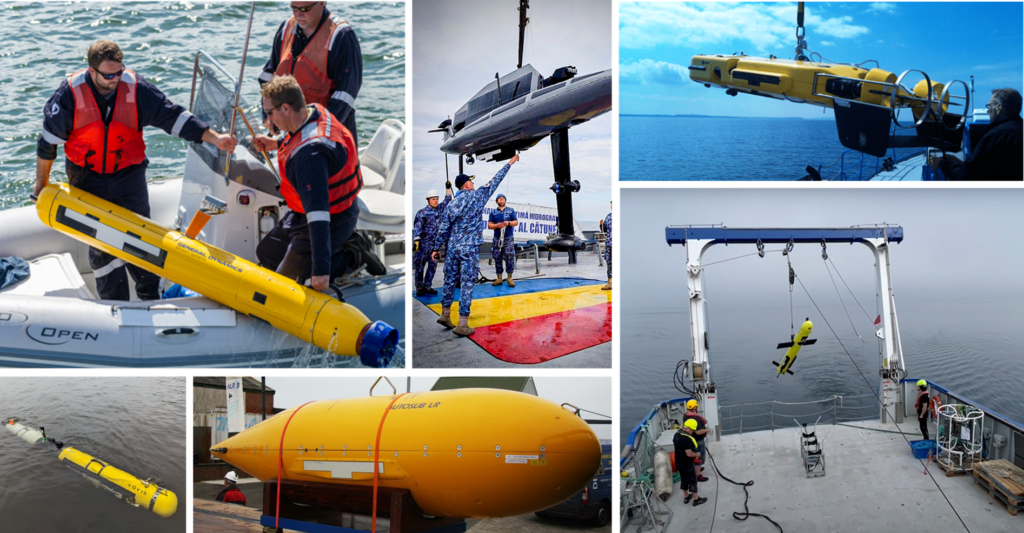
Some key differentiation is follows:
- Performance to power ratio: No other system produces highly detailed mine-hunting data while hardly making a dent on the hotel load of the host platform.
- Performance in shallow waters: In depths of up to 30 m depth, SAS or lower frequency side-scans can be affected by multipath effects from the surface and seafloor. For some SAS systems these effects can compromise as much as 50% of their swath. For Solstice, the impact will typically be less than 10%.
- Simpler to operate: Unlike SAS, Solstice is simple to plan for as the range remains constant regardless of vehicle speed. There is no risk of a data holiday caused by sudden accelerations from currents. The result is more predictable and simpler to manage surveys.
Did you know that a version of Solstice exists that doubles the along-track resolution. The S4000 is longer and consumes more power, 37 W including on-board real time processing, but delivers improved performance to support identification of smaller targets across the whole 200 m swath.
If you would like to find out more please don’t hesitate to get in touch.
